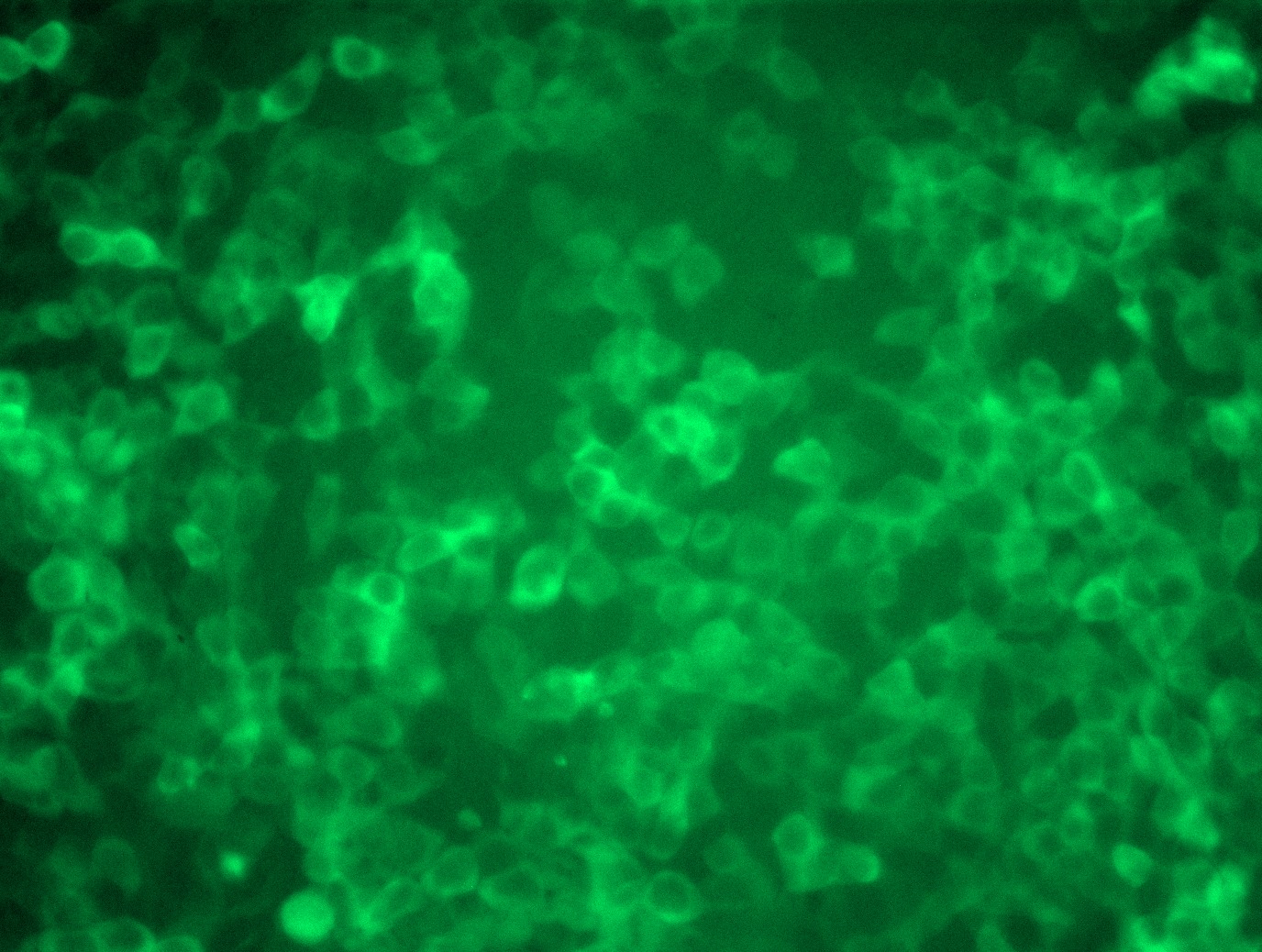Androgen Receptor (AR) (NM_000044) Human Tagged ORF Clone Lentiviral Particle
CAT#: RC215316L4V
- LentiORF®
-

Lenti ORF particles, AR (mGFP-tagged) - Human androgen receptor (AR), OriGene unique variant, 200ul, >10^7 TU/mL
Lentiviral Particles: DDK DDK w/ Puro mGFP
Buy this product and get 50% off on the Lenti RapidTiter kit. Use Code: Rapid50
USD 365.00
Specifications
| Product Data | |
| Type | Human Tagged ORF Clone Lentiviral Particle |
| Tag | mGFP |
| Symbol | Androgen Receptor |
| Synonyms | AIS; AR8; DHTR; HUMARA; HYSP1; KD; NR3C4; SBMA; SMAX1; TFM |
| Mammalian Cell Selection | Puromycin |
| Vector | pLenti-C-mGFP-P2A-Puro |
| ACCN | NM_000044 |
| ORF Size | 2751 bp |
| Sequence Data |
The ORF insert of this clone is exactly the same as(RC215316).
|
| OTI Disclaimer | The molecular sequence of this clone aligns with the gene accession number as a point of reference only. However, individual transcript sequences of the same gene can differ through naturally occurring variations (e.g. polymorphisms), each with its own valid existence. This clone is substantially in agreement with the reference, but a complete review of all prevailing variants is recommended prior to use. More info |
| OTI Annotation | This clone was engineered to express the complete ORF with an expression tag. Expression varies depending on the nature of the gene. |
| Reference Data | |
| RefSeq | NM_000044.2 |
| RefSeq Size | 4314 bp |
| RefSeq ORF | 2763 bp |
| Locus ID | 367 |
| UniProt ID | P10275 |
| Cytogenetics | Xq12 |
| Domains | HOLI, Androgen_recep, zf-C4 |
| Protein Families | Druggable Genome, Nuclear Hormone Receptor, Transcription Factors |
| Protein Pathways | Oocyte meiosis, Pathways in cancer, Prostate cancer |
| MW | 99 kDa |
| Gene Summary | The androgen receptor gene is more than 90 kb long and codes for a protein that has 3 major functional domains: the N-terminal domain, DNA-binding domain, and androgen-binding domain. The protein functions as a steroid-hormone activated transcription factor. Upon binding the hormone ligand, the receptor dissociates from accessory proteins, translocates into the nucleus, dimerizes, and then stimulates transcription of androgen responsive genes. This gene contains 2 polymorphic trinucleotide repeat segments that encode polyglutamine and polyglycine tracts in the N-terminal transactivation domain of its protein. Expansion of the polyglutamine tract from the normal 9-34 repeats to the pathogenic 38-62 repeats causes spinal bulbar muscular atrophy (SBMA, also known as Kennedy's disease). Mutations in this gene are also associated with complete androgen insensitivity (CAIS). Alternative splicing results in multiple transcript variants encoding different isoforms. [provided by RefSeq, Jan 2017] |
Documents
| Product Manuals |
| FAQs |
| SDS |
Resources
{0} Product Review(s)
Be the first one to submit a review






























































































































































































































































 Germany
Germany
 Japan
Japan
 United Kingdom
United Kingdom
 China
China

